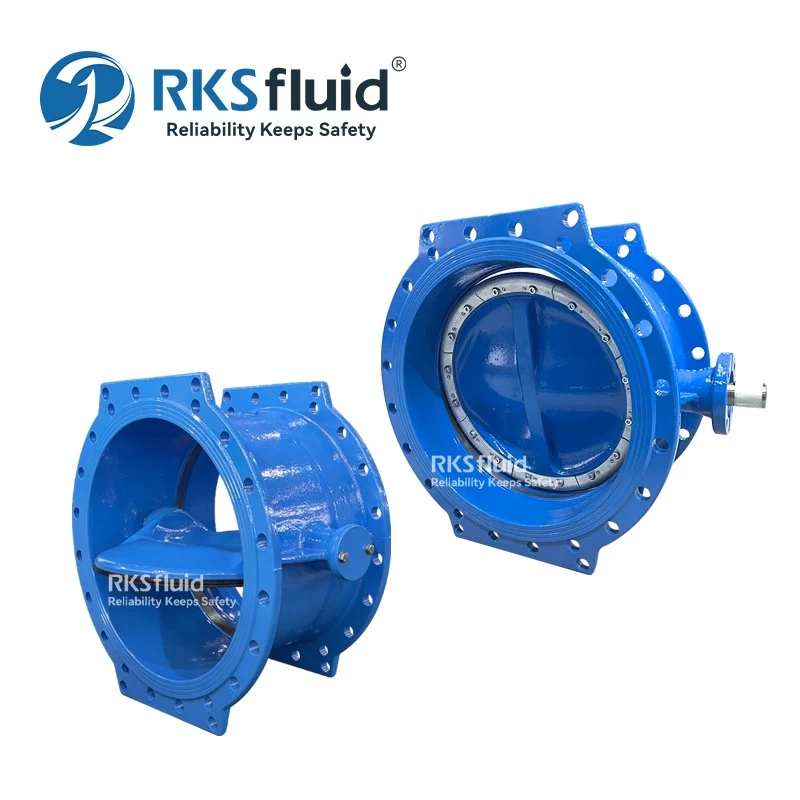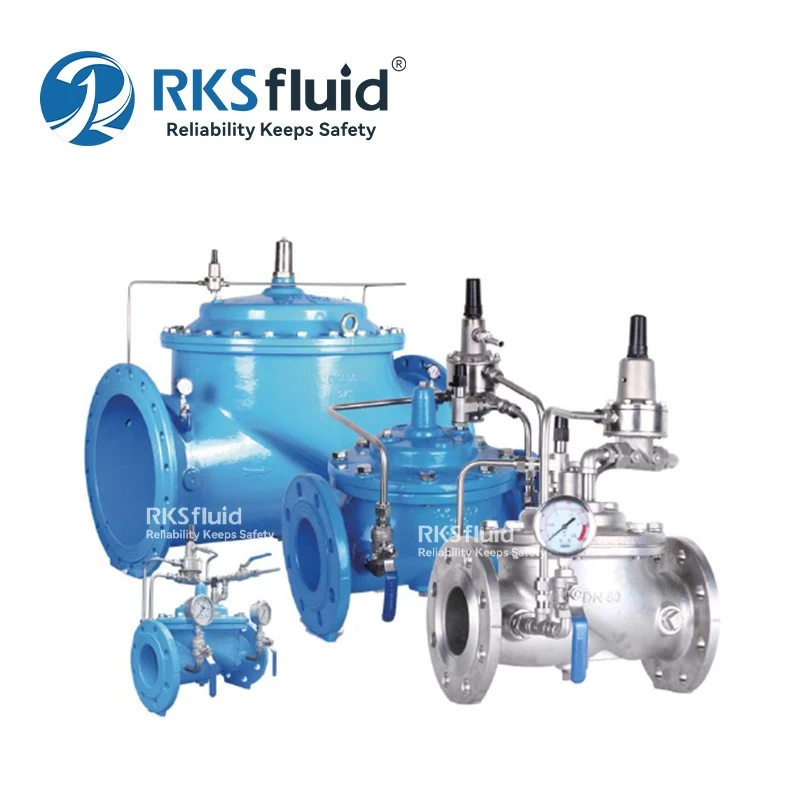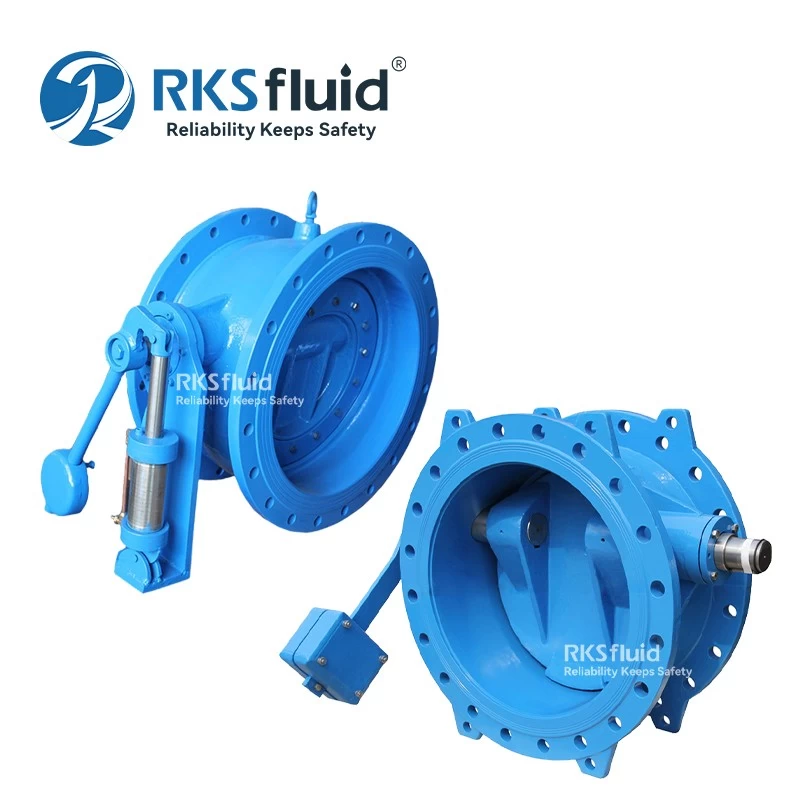- Main Product
- Contact Us
-
RKSfluid Flow Control Company
Web: www.rksfluid.com
Tel: +86 24 2318 0188
Fax: +86 24 2318 0788
Mail: info@rksfluid.com Contact Now
- Subscribe
-
Get email updates on new products
News
Flange knowledge
Flange knowledge
1. The loose flange is the movable flange.
It is usually matched on the water supply and drainage fittings (the most common on the expansion joint). When the factory leaves the factory, there is a flange at each end of the expansion joint, which is directly related to the project. Pipes and equipment are bolted.
2. How is the flange connected to the pipe?
There are many types of flanges. Generally used are flat flanges, butt weld flanges (long neck flanges), loop flanges, etc. Flat welding flange is used for medium and low pressure. It adopts plug welding and welding on both sides. The welding depth is 2-5mm from the flange sealing surface. The butt welding flange can be directly butt welded. The loose flange bolt connection does not need welding.
3.What does the flange type mean?
The flange is a link that connects the valve to the pipe. The connection is made by bolts when the valve is connected to the pipe. Therefore, the N-uniform bolt holes on both ends of the valve are flanged.
1. Flange: Flange is the transliteration of flange, meaning something with flanges, parts, which can be separate, flange or combined, such as one or both ends of the pipe. Flange, there are several through holes on the flange to install the screws. Some bearings have flanges on the outer ring. This flange can be used with or without holes. It is only used for rib positioning.
2. Flange type: The connection between the valve and the pipe or machine equipment is flanged, that is, the connection method is called flange type.
4.What is the flange?
Flanges are disc-shaped parts that are most common in plumbing and flanges are used in pairs. In plumbing, flanges are primarily used for pipe connections. In the pipelines that need to be connected, a variety of flanges are installed, and the low-pressure pipelines can use wire-bonded flanges, and the welding flanges are used at pressures above 4 kg. A sealing point is added between the two flanges and then fastened with bolts. Different pressure flanges have different thicknesses and use different bolts. Pumps and valves, when connected to the pipe, are also made of corresponding flange shapes, also known as flange connections. Connection parts that are closed at the same time by bolting on both planes are generally referred to as "flanges". For example, the connection of ventilation ducts may be referred to as "flange parts". However, this connection is only a part of the equipment, such as the connection between the flange and the water pump, it is not good to call the pump "flange parts". Smaller such as valves, etc., can be called "flange parts".
5.What is the connection method of the flange?
Flange connection is an important connection method for pipeline construction.
Flange connection is to fix two pipes, pipe fittings or equipment on a flange, and between the two flanges, with flange pads, bolted together to complete the connection. Some fittings and equipment have their own flanges and are also flanged.
Flange threaded connection (wire connection) flange and welded flange. Low-pressure small-diameter wire-bonded flanges, high-pressure and low-pressure large diameters are all welded flanges. The thickness of the flanges of different pressures and the diameter and number of connecting bolts are different.
Depending on the level of pressure, the flange pads are also available in different materials, from low pressure asbestos pads, high pressure asbestos pads to metal pads.
The flange connection is easy to use and can withstand large pressures.
Flange connections are widely used in industrial piping. In the home, the pipe diameter is small and low pressure, and the flange connection is not visible. If you are in a boiler room or production site, there are flanged pipes and equipment everywhere. Flange connection is to fix two pipes, pipe fittings or equipment on a flange, and between the two flanges, with flange pads, bolted together to complete the connection. Some fittings and equipment have their own flanges and are also flanged.
Pay attention to the fact that all bolts are tight when connecting, especially when the bolts are tightened.
6.What is the use of the flange?
The flange is used for positioning.
For example, the cylinder has a mounting method called flange mounting. For example, a rectangular hole is made around a rectangular parallelepiped. A large hole is in the middle and the outer diameter of the cylinder is the same. The rectangular parallelepiped is placed on the cylinder and the other can be welded. The way is fixed together, the connection between the cylinder and other things is connected by the four holes around the cuboid. This cuboid can be called blue.
7.What is the difference between the connection of the orifice flange and the ordinary flange?
That is, two pipes, pipe fittings or equipment are first fixed on a flange, and between the two flanges, flange mats are fastened together by bolts to complete the connection.
The orifice flange is the orifice plate flow meter connected to the orifice plate (the measuring part of the orifice flowmeter) to the pipe, and the two flanges fix the orifice plate in the middle, and the differential pressure is introduced through the pressure tapping point on the flange. On the transmitter, to measure the flow.
8.In order to ensure that the installed flange does not leak oil, what problems should be paid attention to during installation?
1. The flange should have sufficient strength and should not be deformed when tightened. The flange sealing surface should be clean and clean, and the oil and rust should be carefully cleaned during installation.
2. The gasket should have good oil and aging resistance, as well as better elasticity and mechanical strength. The installation should be based on the shape of the joints with different cross-section and size of the gasket, and placed correctly.
3. The flange fastening force should be uniform, the compression of the rubber pad should be controlled at 1/3 left.
9. The welding flange is the pipe diameter and wall thickness of the interface end is the same as the pipe to be welded, it is welded like two pipes.
The flat welding flange is a concave table that is slightly larger than the outer diameter of the pipe at the interface, and the pipe is welded inside.
Butt welding has better welding performance and less corrosion.
Flat welding and butt welding are the welding methods when connecting flanges and pipes. When welding flat welding flanges, only one side welding is required, and the inner joints of welded pipes and flanges are not required. The welding installation of the welding flanges requires flanges. Face welding. Therefore, the flat welding flange is generally used for low and medium pressure pipelines, and the butt welding flange is used for the connection of medium and high pressure pipelines. The butt welding flange is generally at least PN2.5 MPa. The butt welding is used to reduce stress concentration. The welding flange is mostly a neck flange and also a nipple flange. Therefore, the installation cost of the welding flange, labor costs and auxiliary materials costs are higher, because there is more than one process.
The welding flange is not all need to be welded inside and outside. There is no special requirement. Generally, it is only welded outside. I have not seen the 1/2" butt welding flange:), the flat welding is better. Because the tube and the flange are perpendicular to each other, the tube will not be inclined.
10.The difference between flange and valve?
The valve is the same thing as a faucet, or the faucet is one of the valves. Can be unscrewed, water or gas can flow out; can be closed, the water will not flow.
The taps in the house are screwed onto the pipe, but some pipes used in the factory, the water or gas inside, the pressure is very high, and the threaded connection is too weak, and it is directly welded or connected by other methods. Flange is one of the connection methods.
11.Example of flange marking and marking
1. National standard mark: the flange should be coded according to the nominal diameter, nominal pressure, sealing surface code, and the code series of the steel pipe used (with the rice pipe code "Series 2", with the English pipe not marked) and the standard number Mark it.
Marking example: convex face welded steel pipe flange with nominal diameter of 80mm and nominal pressure of 4.0MPa (25bar) (with metric pipe)
Flange DN80-PN40 M (Series 2) GB/T9115.2-2000, nominal diameter 100mm, nominal pressure 5.0MPa (25bar), faceted neck welded steel pipe flange (with inch tube) flange DN100-PN50 RF GB/T9116.1-2000.
2. the mechanical department standard mark:
Marking example: nominal diameter 500mm, nominal pressure 1.6MPa, series 2 flat surface welded steel pipe flange
Flange 500-16 JB/T81-94
Nominal diameter 300mm, nominal pressure 6.4MPa, series 1 concave facing welded steel pipe flange
Flange 300-64B (Series 1) JB/T82.2-94
(Note: The mechanical default standard tube outer diameter is series 2, butt welding flange classification: A-type convex surface, B-shaped concave surface, C-shaped surface, D-shaped groove surface)
3. Standard mark of the Ministry of Chemical Industry: The flange should be marked according to the following regulations (recommended for this marking method)
a. standard number: all types of pipe flanges are marked with the standard number of this standard: HG20592.
b. The flange type code is as specified in Table 5.0.1.
When the threaded flange is made of taper pipe thread according to GB/T7306, it is marked as “Th(Rc)” or “Th(Rp)”;
When the threaded flange is made of taper pipe thread according to GB/T12716, it is marked as “Th(NPT)”;
If the threaded flange is not marked with a thread code, it is Rp (GB/T7306.1).
c. flange nominal diameter DN (mm) and applicable steel pipe outer diameter series:
The integral flange, flange cover, lining flange cover, threaded flange, the mark of the outer diameter of the applicable steel pipe can be omitted.
Applicable to the flange of the international general series of steel pipes (commonly known as the British pipe), marked "DN (A)".
It is suitable for flanges of domestic series of steel pipes (commonly known as metric pipes) and is marked as “DN(B)”.
d. flange nominal pressure PN, MPa.
e. The sealing surface code is as specified in Table 6.0.1. If the flange is flanged, the watermark is “RF(A)”.
f. The wall thickness of the steel pipe to be provided by the user.
The wall thickness of the steel pipe shall be marked with the neck butt weld flange and the butt weld ring loose flange.
g. material grade.
h. other. Use requirements or additional requirements that are inconsistent with the requirements of this standard series, such as the surface roughness of the sealing surface.
Tag example:
Nominal diameter 1200mm, nominal pressure 0.6MPa, with panel-type flat welded steel pipe flange with metric pipe, material is Q235A
HG20592 Flange PL1200(B)-0.6 RF Q235A
Nominal diameter 300mm, nominal pressure 2.5MPa, convex neck welded steel pipe flange with inch tube, material is 20 steel
HG20592 flange SO300(A)-2.5 M 20
Nominal diameter 150mm, nominal pressure 16.0MPa, ring joint surface with imperial pipe with neck butt welded steel pipe flange, material is 16Mn, steel pipe wall thickness is 10mm
HG20592 Flange WN150(A)-16.0 RJ S=10mm 16Mn
The nominal diameter is 200mm, the nominal pressure is 1.0MPa, and the flange of the welded pipe with the metric pipe is loose. The material is: flange 20, butt weld ring 316, the wall thickness of the steel pipe is 4mm.
HG20592 Flange PJ/SE200(B)-1.0 RF S=4m 20/316











